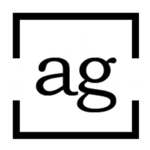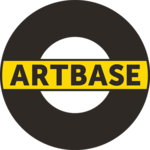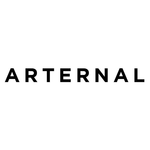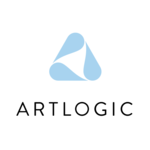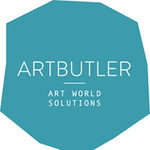What Is Art Gallery Software?
Art Gallery Software is a vital tool for any art gallery that wants to streamline operations and increase overall company performance. It refers to a set of digital solutions built exclusively for art galleries that simplify and automate a variety of duties such as inventory management, marketing, sales, and customer relationship management.
At its heart, Art Gallery Software functions as a consolidated database containing all information about an art gallery's holdings, artists, and consumers. This database is easily accessible and updated by gallery personnel, providing them with real-time information and insights into their operations. Inventory management is one of Art Gallery Software's core functions.
This program allows galleries to effortlessly maintain and manage their art collections, including their present location, sales history, and pricing. This not only helps galleries retain correct inventory records, but it also allows them to make educated judgments about artwork price, acquisition, and exhibition. Another major feature of Art Gallery Software is its marketing and sales capabilities.
Galleries may promote their collections and attract a larger audience by utilizing built-in email marketing, social media management, and online sales features. This not only increases visibility for their artworks, but also makes it easy for potential purchasers to make purchases. Furthermore, Art Gallery Software contains customer relationship management tools that enable galleries to track their clients' preferences, purchasing history, and communication.
This contributes to deeper client relationships and a more personalized experience. When selecting Art Gallery Software, several elements must be considered, including affordability, usability, integrations with other products, and customer service. Finally, the appropriate software will not only help galleries run more effectively, but it will also improve the whole shopping experience for their consumers.
What Are The Recent Trends In Art Gallery Software?
Art galleries have long depended on manual methods and tangible paperwork to run their operations. However, with the rapid advancement of technology, there has been a substantial trend toward employing art gallery software to automate and improve these procedures. One of the most recent developments in art gallery software is the use of cloud-based services.
This enables galleries to store data and run operations online, resulting in more flexibility and accessibility. With cloud-based software, galleries can readily access their data from anywhere, at any time, making it easier to operate their company remotely. Another trend is the incorporation of mobile apps. Many art gallery software providers now provide mobile applications that enable galleries to store inventory, manage contacts, process transactions, and even hold virtual exhibits.
These mobile apps are easy to use, allowing galleries to manage their operations while on the road. AI and machine learning (ML) are also finding their way into art gallery software. This technology is being used to automate activities like inventory management and pricing, which will save galleries time and eliminate human error.
AI and machine learning may also help galleries examine data and make educated decisions to enhance their business operations. Furthermore, there is an increasing tendency towards giving a more immersive experience for gallery owners and customers using virtual and augmented reality. These technologies enable galleries to present their collections in a virtual environment, offering purchasers a more realistic and interactive viewing experience.
Finally, there has been a growing emphasis on data security and privacy in art gallery software. With the increased use of technology, galleries must protect the security of their data and the sensitive information of their clientele. As a result, many software companies are introducing advanced security features like encryption and safe data storage to guard against cyber attacks.
Benefits Of Using Art Gallery Software
Art galleries serve an important role in the art industry, allowing artists to present their work and interact with possible purchasers. As technology advances, galleries are turning to art gallery software to streamline procedures and improve overall company operations.We will look at the benefits of utilizing art gallery software and help you make an informed decision when selecting the best solution for your gallery.
1. Centralised Management: Art gallery software provides a single platform for managing all parts of your gallery, such as inventory, sales, artist information, and customer data. Instead of utilizing different apps and spreadsheets, you can get all of the information you need in one location, making it simpler to keep organized and productive.
2. Automate Processes: Art gallery software allows you to automate processes like inventory management, sales monitoring, and invoicing. This not only saves you time, but it also lowers the possibility of human mistake, resulting in accurate and up-to-date data.
3. Streamline The Sales Process: The program enables you to construct a digital catalog of your artwork, making it easier for potential purchasers to explore and purchase online. You may also handle sales and payments directly from the platform, which eliminates the need for manual transactions.
4. Track and Analyze Data: Art gallery software includes powerful reporting and analytics capabilities, allowing you to keep track of your sales, inventory, and customer information. This data may help you make educated business decisions, such as which artists or works are most popular, and which techniques are driving sales.
5. Improve Customer Relationships: A decent art gallery software enables you to keep track of customer information, purchase history, and preferences. This allows you to give your clients with a more personalized experience while also developing strong ties with them.
6. Secure And Accessible: Cloud-based art gallery software allows you to view your gallery's data from any location, at any time, as long as you have an internet connection. Furthermore, the data is securely kept, assuring privacy and the security of critical information.
7. Cost-Effective: By automating duties and simplifying procedures, art gallery software may help you cut operating costs. This, together with its easy management and reporting features, might result in higher revenue for your gallery. Finally, art gallery software has several benefits, including centralized management, automation, and data monitoring, making it essential for any modern art gallery. Investing in the appropriate software allows you to streamline your processes, improve client interactions, and eventually expand your organization. When considering several possibilities, be sure to examine the features and select the solution that best matches the demands of your gallery.
Important Factors To Consider While Purchasing Art Gallery Software?
When choosing art gallery software, there are numerous crucial considerations. As an art company owner, you must make educated decisions that benefit both your gallery and your clientele.
we'll go over the most important variables to consider while selecting art gallery software.
1. Budget: First and foremost, identify your software budget. Art gallery software can range from free to pricey, so set a budget and adhere to it. This will help you reduce your choices and avoid overpaying.
2. Gallery Needs: When looking for art gallery software, keep your gallery's unique requirements in mind. Do you need accounting and inventory management features? What about online sales and customer management tools? Make a list of the features and functions that are required for your gallery to operate well.
3. User-Friendly Interface: An intuitive and user-friendly interface is essential for every applications. As an art company owner, you want to focus on client connections and gallery management rather than navigating software. Look for software that's simple to use and requires little training.
4. Compatibility: Make sure the art gallery software you chose is compatible with your existing systems and devices. This comprises your computer's operating system, hardware, and many software programs. Compatibility will eliminate technical hassles and save you time and money.
5. Mobile Accessibility: In today's fast-paced world, mobile accessibility is essential for any product. This enables you to manage your gallery on-the-go, answer to customer requests quickly, and make rapid judgments. Look for software that includes a mobile app or is available via a web browser.
6. Data Security: Art galleries handle sensitive customer information, including financial and personal information. It is critical to choose software that prioritizes data security. Look for software that provides encryption and secure data storage to safeguard your clients' information.
7. Customer Help: Reliable customer help is vital in the event of a technical issue or concern. Look for software firms that provide 24/7 customer assistance by phone, email, or live chat.
8. Reviews And Suggestions: Before making a purchase, look up and read reviews and suggestions from other art gallery owners. This can help you better grasp the software's features, customer support, and general user experience. Keeping these criteria in mind will allow you to make an informed selection when selecting art gallery software. Remember to consider your budget, specialized requirements, usability, compatibility, mobile accessibility, data security, and customer service. By examining these aspects, you may choose the ideal software for your art gallery, streamlining operations and improving client experiences.
What Are The Key Features to Look for In Art Gallery Software?
When selecting art gallery software, you should consider many crucial characteristics to ensure that you are making the greatest option for your company. These features include the following:
1. Inventory Management: One of the most significant aspects of art gallery software is its ability to efficiently manage and track inventory. This involves tracking sales, consignments, and artwork placements.
2. Online Sales Capabilities: In today's digital era, art galleries must have an online presence. Look for software that allows you to effortlessly set up an online business and manage sales.
3. Client Management: Good art gallery software should have capabilities for managing your clients' contact information, purchase history, and preferences.
4. Image And Document Management: An art gallery relies heavily on artwork images as well as papers such as invoices and contracts. Make sure the program you pick includes options for organizing and managing these files.
5. Customization Options: Each art gallery has distinct requirements and processes. Look for software with customization options so you may adjust it to your individual needs.
6. Marketing And Promotion Tools: A decent art gallery software should have options for promoting and marketing your business, such as email marketing, social media integration, and analytics. 7. Reporting and Analytics: Access to data and analytics is critical for making sound business decisions. Look for software that has full reporting and analytics features.
8. Mobile Compatibility: Running an art gallery sometimes needs being on the go. Choose mobile-friendly software that allows you to run your business from anywhere.
9. User-Friendly Interface: An easy-to-use interface is essential for software efficiency and effectiveness. Look for a platform that is simple and straightforward to use.
10. Customer Support: Finally, assess the software provider's degree of customer assistance. Look for a service who can give you with fast and skilled assistance when needed. When selecting art gallery software, keep these crucial aspects in mind and choose a platform that matches your individual demands while also allowing you to operate your gallery quickly and successfully.
Why Do Businesses Need Art Gallery Software?
Art galleries, whether real or online, confront distinct issues in managing and exhibiting their holdings. In a fast-paced sector with severe competition, remaining organized and efficient is critical to the success of any creative business. This is where art gallery software comes in.
Here are some important reasons why businesses require art gallery software.
1. Centralized Database And Inventory Management: Art gallery software has a centralized database that allows gallery owners to simply store and manage all of their artwork and inventory. This removes the need for many spreadsheets and manual record-keeping, making it simpler to track and update the status of each item.
2. Streamlined Sales Process: Art gallery software automates the whole sales process, from invoice generation to payment acceptance, making it faster and more efficient. This not only saves time but also decreases the possibility of human mistake, resulting in smoother interactions with clients.
3. Online Catalogue and E-Commerce: As online art markets have grown in popularity, art firms must now have an online presence. Art gallery software enables the establishment of a visually beautiful and user-friendly online catalogue, allowing buyers to browse and purchase artwork from any location in the globe.
4. Artwork Promotion and Marketing: Many art gallery software alternatives include marketing tools like email campaigns and social media integration, which help businesses reach a larger audience and efficiently promote their collections.
5. Customizable Reporting and Analytics: Managing and analyzing data is critical for any business, and art gallery software simplifies the process by providing customizable reporting and analytics. This gives useful information on sales patterns, popular artwork, and other key indicators that may help firms make smart decisions. Investing in art gallery software may help enterprises of every size, from tiny independent galleries to major museums.
Not only does it streamline processes and boost productivity, but it also enables improved customer service, which leads to higher sales and income. With so many alternatives on the market, businesses must carefully examine their individual requirements and budget when selecting the best art gallery software for their company.
How Much Time Is Required To Implement Art Gallery Software?
When contemplating deploying art gallery software, most purchasers' first inquiry is likely to be, "How long will it take?". The answer varies based on the program and gallery requirements, but there are certain common variables that might help you set expectations. The first consideration is the sort of software being used. Some art gallery software is designed for rapid and simple installation, with user-friendly interfaces and pre-built layouts.
Depending on the size and complexity of your gallery, these solutions may often be up and operating within a few days or weeks. However, if you choose more specialized or complicated software, the installation procedure may be lengthier. It is critical to plan for a longer timetable because these solutions frequently require extra configuration and training.
Another issue to examine is how well your present procedures match the software's capabilities. If your gallery already has well-defined procedures and structured data, the deployment process may go more smoothly and quickly. However, if your gallery is currently organizing and digitizing its inventory and operations, it may take longer to completely implement the program.
The preparedness of your staff is also an important aspect. If your employees are well-trained and acquainted with technology, they may be able to learn the new program fast. However, if there is a learning curve or opposition to new technology, it may take longer for them to completely embrace the program. Finally, the quality of support and help offered by the software supplier can have a considerable influence on installation time.
Some firms provide extensive training and onboarding services, while others may provide little assistance. It is critical to assess the degree of help offered and provide adequate time for training and support, since this can have a significant influence on the success of the software deployment.
What Is The Level of Customization Available In Art Gallery Software?
Art Gallery Software is an effective tool for streamlining and automating numerous activities in an art gallery or museum. When comparing different alternatives, customers should examine the amount of customisation offered. The ability to customize the software to meet the specific demands of a certain gallery may significantly improve its efficacy and efficiency.
Different art gallery software applications provide a wide range of customizing choices. Some may include simple customization options, such as adding a logo or altering the colors to reflect the gallery's identity. Others may provide more complex customization options that enable the development of custom fields, forms, and processes.
Some applications may also allow you to change the layout and appearance of the user interface based on the gallery's preferences. This might be especially handy for galleries with specific display or organizing requirements. Furthermore, some software may enable for modification to match certain creative genres or categories, such as painting or sculpture.
Furthermore, certain art gallery software may provide plug-in or integration features, allowing galleries to incorporate other tools or software that they already use. This can give a high level of customisation since it enables for seamless integration of diverse systems and procedures.
Furthermore, complex customization options may necessitate some technical knowledge or skill.Buyers should examine the software's simplicity of use and the quality of assistance supplied while assessing its customization possibilities.
Which Industries Can Benefit The Most from Art Gallery Software?
Art Gallery Software can be utilized by a variety of industries to enhance their operations and streamline their processes. However, there are certain industries that can benefit the most from incorporating such software into their workflow. These industries include:
1. Art Galleries: As the name suggests, art galleries can benefit the most from Art Gallery Software. This software is specifically designed to cater to the needs of art galleries, from managing inventory and sales to organizing exhibitions and events. It allows galleries to efficiently track their collections, sales, and customer information, thus enabling them to make informed decisions and improve their overall sales and productivity.
2. Museums: Museums hold a vast collection of precious artifacts and artworks that need to be carefully managed and preserved. Art Gallery Software can assist museums in effectively managing their collection, including acquisition, conservation, and loan tracking. It also allows them to keep a record of exhibitions, loans, and donations, making it easier to monitor and analyze the movements of their assets.
3. Auction: Houses For auction houses, time is of the essence. Art Gallery Software can help in speeding up the process of cataloging, evaluating, and marketing artworks for auction. It also enables them to handle multiple auctions and bidders simultaneously, making the process more organized and efficient.
4. Art Dealers: Art dealers need to stay on top of their inventory and sales to run a successful business. Art Gallery Software can assist them in managing their collection, promoting their artworks online, and tracking their sales and revenue. It also offers features like customer relationship management, enabling dealers to communicate and build relationships with potential buyers.
5. Corporate Collections: Many corporations have their own art collections that need to be managed and cataloged. Art Gallery Software can help in tracking and organizing these collections, including purchase history, location, and insurance information. It also provides a platform for corporations to showcase their artworks to their clients and employees.
Conclusion
In conclusion, selecting the correct art gallery software may significantly improve the productivity and success of your art company. When making your selection, examine your gallery's unique requirements, such as inventory management, online sales capabilities, and marketing features. Additionally, consider the software provider's user-friendliness and customer support.
Remember to look at the pricing structure and any additional fees for add-ons or upgrades. By extensively studying and comparing several possibilities, you may choose the ideal art gallery software that suits your budget and satisfies your individual needs. Keep in mind that investing in dependable and user-friendly software will eventually save you time, money, and worry, enabling you to concentrate on the creative side of operating your art company.






